Canon 1D Mark III – Canon 200mm f2 L IS USM (B&H) – 1/300th @ f2 @ 125 ISO
[ click on the photo to see a larger image]
Canon recently upgraded their legendary 200mm f1.8 with an 200mm f2 version which has Image Stabilization. So out of curiosity I rented this lens from LensProToGo, to play with it and test it out.
Here is the beast of a lens: the Canon 200mm f2 L IS USM (B&H)

This is the kind of lens which is best used (or in a way ONLY to be used) at its maximum aperture. That wide aperture of f2 gives you an incredibly thin depth of field, and hence, that dreamy background. This of course wouldn’t mean much if the lens itself wasn’t crisply sharp at f2 … and in fact, on checking my images at 100%, this lens proved itself to be count-the-eyelashes sharp at that wide aperture.
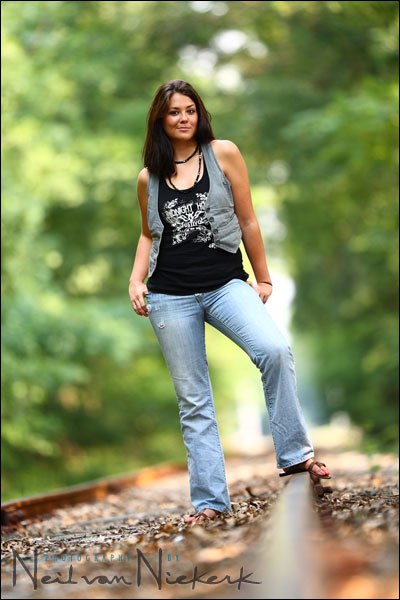
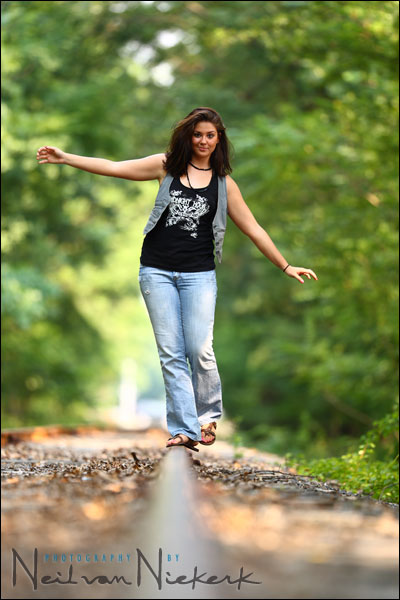
My patient model was Jackie, who is also a young photographer in New York.
The images here haven’t received any Photoshop treatment, but in making the RAW-to-JPG conversion in Canon’s DPP software, I bumped up the saturation and contrast a touch.
The soft natural light here was augmented by an off-camera Quantum T5D-R with the Quantum wireless TTL flash system, connected to the camera as described in this previous post. The Q-flash was diffused with the Westcott Apollo Softbox.
Click here for a pull-back shot to show the position of the Q-flash and softbox.
.
So let’s look at the effect this wide an aperture has on the out-of-focus area.
(Now keep in mind that in reducing the image for web display, a lot of info is lost, and you simply won’t see the full effect.)
top image with the 200mm f2 @ f2 .. [ click on the photos to see larger images]
bottom image with the 200mm f2 @ f4
That background just looks so dreamy smooth with this lens wide open.
In checking the 70-200mm f2.8 IS zoom at f4 against the 200mm f2 @ f4, I couldn’t really discern any difference in how the background was rendered.
The bokeh of both lenses appear similar when compared at f2.8 and f4.
(I didn’t bother to check the 200mm f2 at f5.6 .. because there is no way that you would spend $5400 and then use this lens at f5.6 )
As I’ve mentioned already, this lens is sharp! And in comparison to a number of images, I’d say it is sharper at f2 than my 70-200mm f2.8 IS zoom is at f4. Yes, even stopped down to an aperture where I am happy enough with the zoom lens’ sharpness, it doesn’t match the 200mm f2 wide open.
To say I want one of these lenses, is an understatement.
.
![]()
.
[ edited to add more photos – July 31, 2008 ]
I’m still having a love affair with this lens.
Yesterday evening Jackie and I went in to New York, specifically Times Square. I took some available light portraits of Jackie right there in the middle of Times Square, using the neon billboards as backdrops. Now, the light here on her is entirely from the numerous neon lights and billboards. (This image is pretty much straight out of camera, with only the WB touched up in RAW.)
Canon 1D Mark III – Canon 200mm f2 L IS USM (B&H) – 1/100th @ f2 @ 800 ISO
[ click on the photo to see a larger image]
.
Again, this next image is also straight out of camera except for WB correction in RAW.
That impressionistic background is entirely the lens!
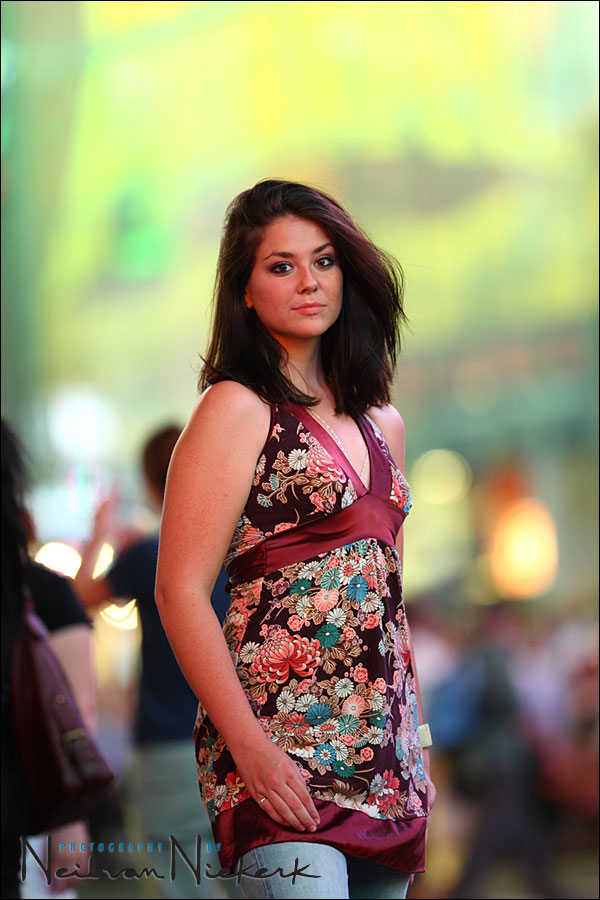
Canon 1D Mark III – Canon 200mm f2 L IS USM (B&H) – 1/100th @ f2 @ 800 ISO
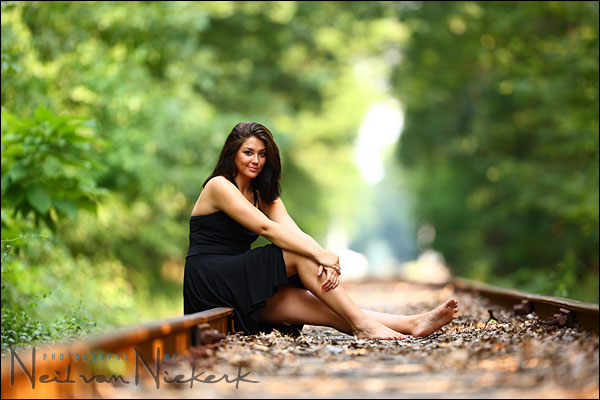
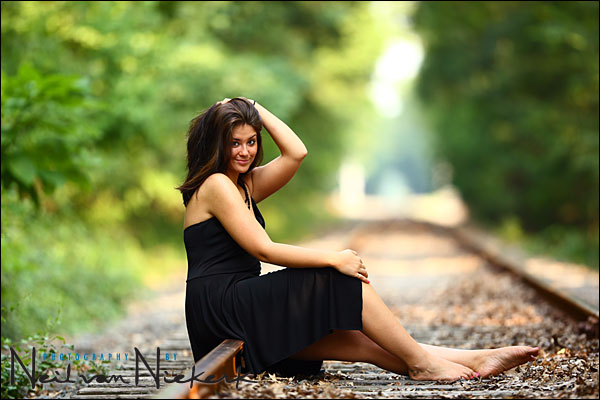
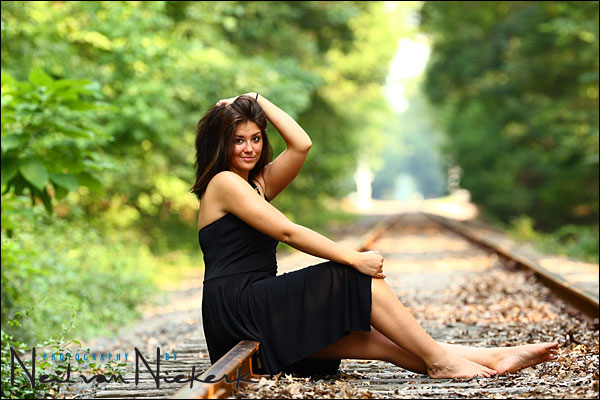
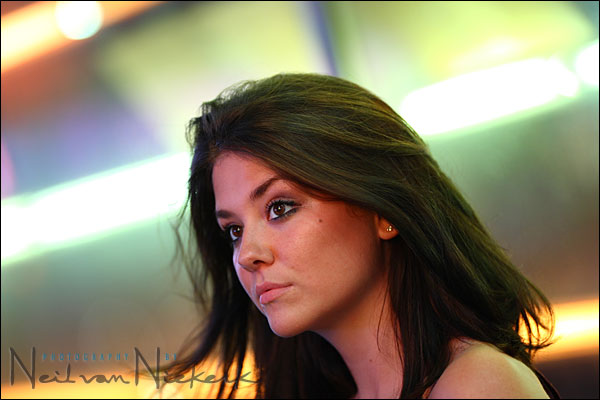
Ok, get two of those and please send me one ;) it’s only € 4.879,00 here in Italy!
Please, buy three and another for me.
Im using 45eu manual lens for mirror less Olympus camera and I feel at lightyears distance from this photography
Great look at the lens, backgrounds look great. I can see a slight difference in the background sharpness (very slight), images look great!
Where do you find train tracks in a beautiful setting in NYC or LI and not get run over or mugged?!
Is this on a FF or crop sensor? I find the sharpness and bokeh quality with the 70-200 f/4L IS to be very acceptable wide open at f/4, even on a 1.6x crop. This is a nice lens, thanks for the shots!
Can I assume you were around -2FEC or even more, just to provide a little pop and fill here?
I’ve got the 70-200 f4L IS and the nifty 50 f/1.8. Recently I spang for my first non-L lens in years buying the 85mm f/1.8. It too has great shallow DOF and excellent pic clarity as it too is a prime. Have you tried and can you use the 1.4 or 2x extenders with this lens (the 200 f/2L IS)?
Beautiful shots, Neil. I know you’ve got (or at least had) the 85 1.2 lens. What are your thoughts in comparing the two. Obviously there is a fairly significant difference in focal length between 85 and 200mm, but the 85 obviously has some dreamy bokeh in its own right. Is it the additional compression from the longer focal length that calls to you here?
Nice piece of glass! Nikon also has a 200mm f2.0 which delivers excellent quality as well but costs almost 4000 euros :-(
Excellent post. The images are very nice. I am just not sure $6000 dollars or so for a prime lens is worth it in the long run.
However, I might change my mind down the road hehe.
Be sure it is worth it. I spent the $6,000 a few weeks ago after I dropped my 70-200 2.8. I love this 200 2.0!
Neil,
Would this lighting set up work with a less powerful flash such as the SB900? (Providing I had a reliable wireless system…)
Brian
Jackie sure makes that lens look like a $12,000 dollar lens. She’s too pretty not to be in front of the camera most of the time. ;-)
Just had to comment…..again…..
It looks a little soft to me, especially in the eyes… maybe 1/100th is too long @ 200mm x 1.3 . . .
Still, the buttery bokeh is to die for.
-Dave
Love, love, love the impressionistic background shot. I gotta shoot with you someday. Or at least take a class or two. Good stuff Neil
Love the NYC shots, the background bokeh is to die for. One of the reasons my 85 1.2 is now my favorite lens, and I usually shoot wide open with it (’cause I can, ;-)).
Those are some great shots with a great hunk of glass. I’m very interested in the comparison with the 85 1.2, which I own. Getting out my slide rule, taking a picture of a subject with the same perspective, the 85 1.2 will actually have a shallower DOF than the 200 f2. Distance from subject is the factor here, and obviously, you can’t duplicate the compression of the 200mm, but I’d like to see a comparison between these two for portraiture. I personally find the 85mm FL very useful, and don’t see the extra $4k+ for the 200 worth it (for portraits). I still would love to have one, though!
Neil, I discovered your site a month ago and I’ve got addicted! Great work!! I learned a lot (A LOT!) about flash technique. I would like to attend one of your workshops but I live in Romania…The Far Far Away Land. Come visit…:)
This is pretty off topic, but you mentioned the 70-200 zoom lens getting sharper with the higher aperture setting. Is this typical of most zoom lenses. I own a Sigma DC 17-50 mm f/2.8 and for the most part I love it. For close up portraits it’s very sharp. But with distance photos or full body shots I could never crop in close because it’s just not sharp. I usually shoot at 2.8. Maybe I need to shoot at higher apertures in these circumstances? Just crossed my mind as I read your post. Your shots are beautiful. That lost shot really is amazing. It’s like pausing time as the rest of life smooths into the background.
Fantastic shots! Kind of OT but, on the pull back shot of Jackie showing the position of the Q-flash and softbox, what is your criteria for the distance of the flash to the subject. My instinct would be to place it closer to the model. Is it because you are mainly using it as fill flash only?
Thank you Neil. Makes sense! Well it worked. I absolutely love that shot and love learning from this site.
I appreciate your response!
Wow! I’ve heard of this lens and how it was discontinued and now brought back to service again by Canon. The examples here is just awesome! Oh if I had the money….
Hi,
Thanks for your little test with the new Canon 200mm f2. It was interesting and good to see great results. I have the Canon 200mm f1.8 Lens and I also had the chance to test the new 200mm f2 which a good photographer friend of mine just recently purchased. Altrhough the new 200mm f2 is a great lens it still is not as good as the old Canon 200mm f1.8 lens.
When I compared the old f1.8 model with the new f2 model the old f1.8 model lens won hands down. The f1.8 is sharper at every stop and it’s clarity is also allot better. I think this may be because when Canon stopped making the 200mm f1.8 many years ago the glass contained lead which gives lenses a much better quality overall. No new lens contains lead anymore which is why it’s difficult for the manufacturers to get that sharpness, clarity and quality again.
I shoot everything from sports action to fashion to commercial to portraiture and I certainly noticed the quality difference. In saying that though, Canon have still done a great job with the new 200mm f2 lens but no lens out at the moments beats the Canon 200mm f1.8 Lens.
It’s the best lens they’ve ever made!
Cheers
Bradley
Hi Neil,
Thanks for the great review and shots. I have and love the 135f2 and wonder if you have an impression of this lense? Disregarding the perspective and compression, does the 200f2 surpass it in sharpness and bokeh?
Fantastic work, 200mm f2 is superb….
hi Neal, i’ve been in the field as a pro for over 3 decades, and, finally, with
the purchase of my 7 D I have the tools to share my vision. I have the 85 1.2,
and the 70-200 2.8, and the 10-22. I’m amazed at the velvety smoothness of the
images. Now my curiousity is stoked, and I came across your post re: the 200 f2.
Thank you so much for sharing! I would love to have that lens, but can’t yet
justify the price. maybe the 135 f2.
Hello Neil
“Picture Perfect” Just want to know about the Exposure of First picture. how did you achived properly exposed background @ 1/300 F2 250 ISO ? Did you Bring Down the Exposure compensation to -1 or -2 or Even more ? Wahat was the Flast Mode TTL FP BL or Just TTL FP.?
Thanks
Anoop
How does this lens compare to 70-200L IS II? Worth selling the 70-200 IS II and adding extra cash for the 200L?
Wow. Forget about the camera… who is this girl? Very beautiful. The scenery is breath-taking too. Good job.
I have a 300mm prime that I use for equestrian eventing photos. At a distance, shooting it at f2.8 separates the horse and rider from the background so beautifully. The 300 is a bit long for some of the events, and the distances involved, so after looking, I ordered a 200mm prime to add to my kit. Thank you for the wonderful write up and examples.